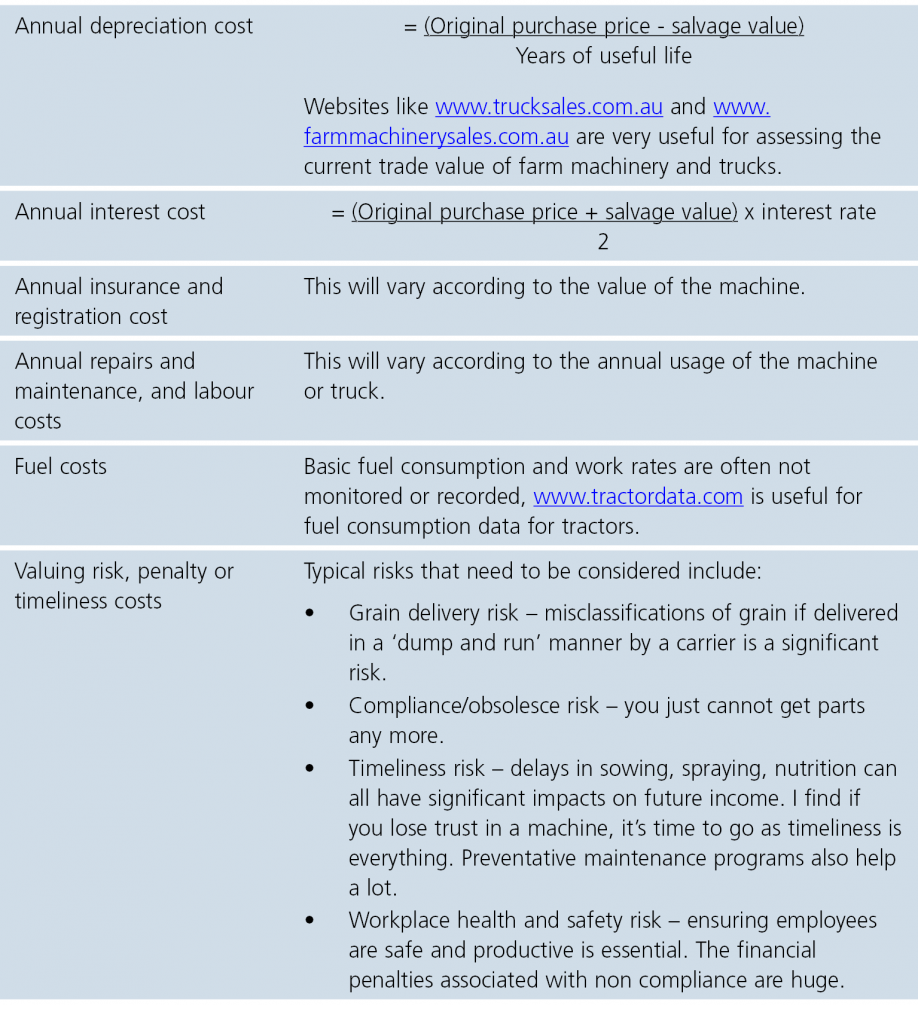Machinery decision making can be a complex area requiring investment of significant capital. It is important a strategic plan is developed to guide an informed and disciplined approach to farm machinery changeover.
A farm machinery business should be run like a manufacturing business. The owner should be continuously asking, “how can I achieve the highest productivity for the least cost?”
As an overarching management principle we like to see businesses operating with a machinery investment to income ratio of 1:1. If a farmer wants the toys, we suggest they need to do some more deals to leverage their overall business revenue.
Starting the machinery decision making process with a discussion about policy is a good place to begin. Farm business policy is often intuitive, ie. it is not written down. This does not mean it has not been well considered, the policy has been thought about reflectively for years.
Like all business policy discussions, it is important to have these discussions with all business owners and stakeholders. This then leads to greater depth of thinking and commitment to the overall business strategy.
A machinery policy should consider:
- Upgrade frequency (number of hours or kilometres)
- Functionality
- Strategic business need
- Brand image
- Proactive management of risk
- Occupational Health and Safety
- Personal productivity
- Employee productivity
- Capacity to manage breakdowns
- Efficiency objectives
- Ease of employee use and understanding
- Colour
- Budget
- Personal goals
Understanding the total cost of ownership in $/ha or $/hr is crucial for effective machinery decision making. When the cost of owning a new machine is cheaper $/ha or $/hr than the existing machine it should be changed over.
Total cost of ownership is a simple process for understanding the costs associated with operating a piece of farm machinery or a vehicle. It involves adding the following costs and dividing by your total hectares or operation hours. The total cost of ownership figure can then be used to compare the outcome with a contractor. It can also be divided by various contracting rates to look at breakeven tonnes.

High performing farm businesses are able to get excellent utilisation from their investment into machinery and labour through good forward planning and organisation, identifying and removing bottle necks, excellent logistics management and having simple and scalable production systems. They also accurately know daily work rates and build in extra time as a contingency budget for unexpected weather or machinery breakdown interruptions when planning key management windows such as seeding and harvest.